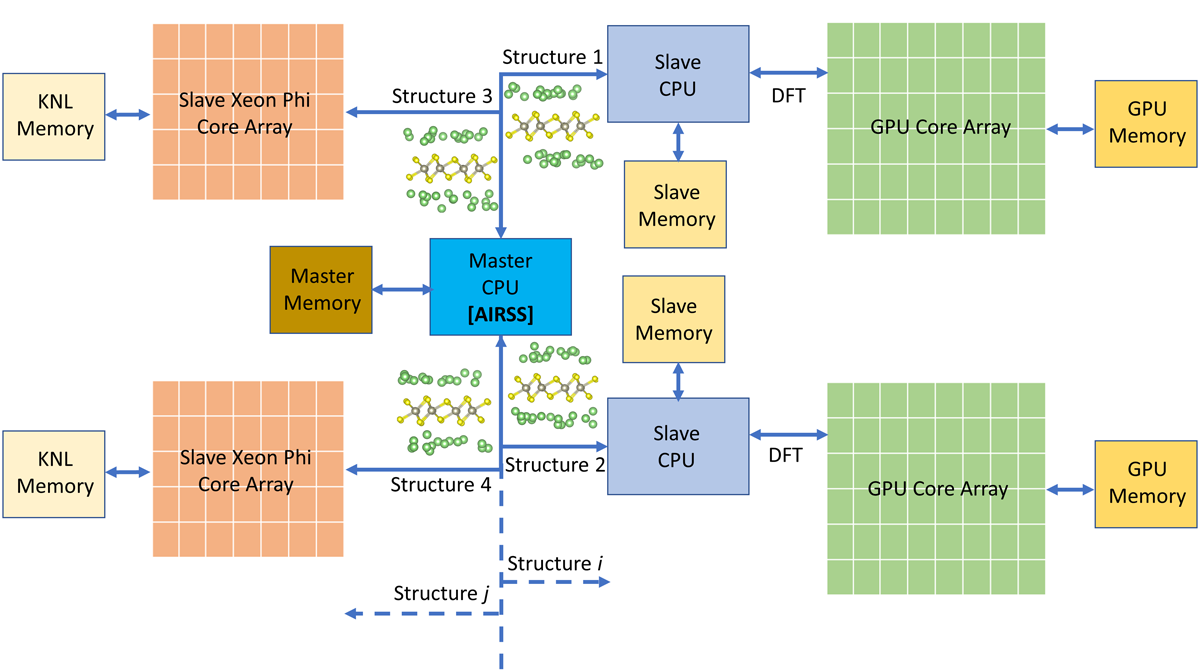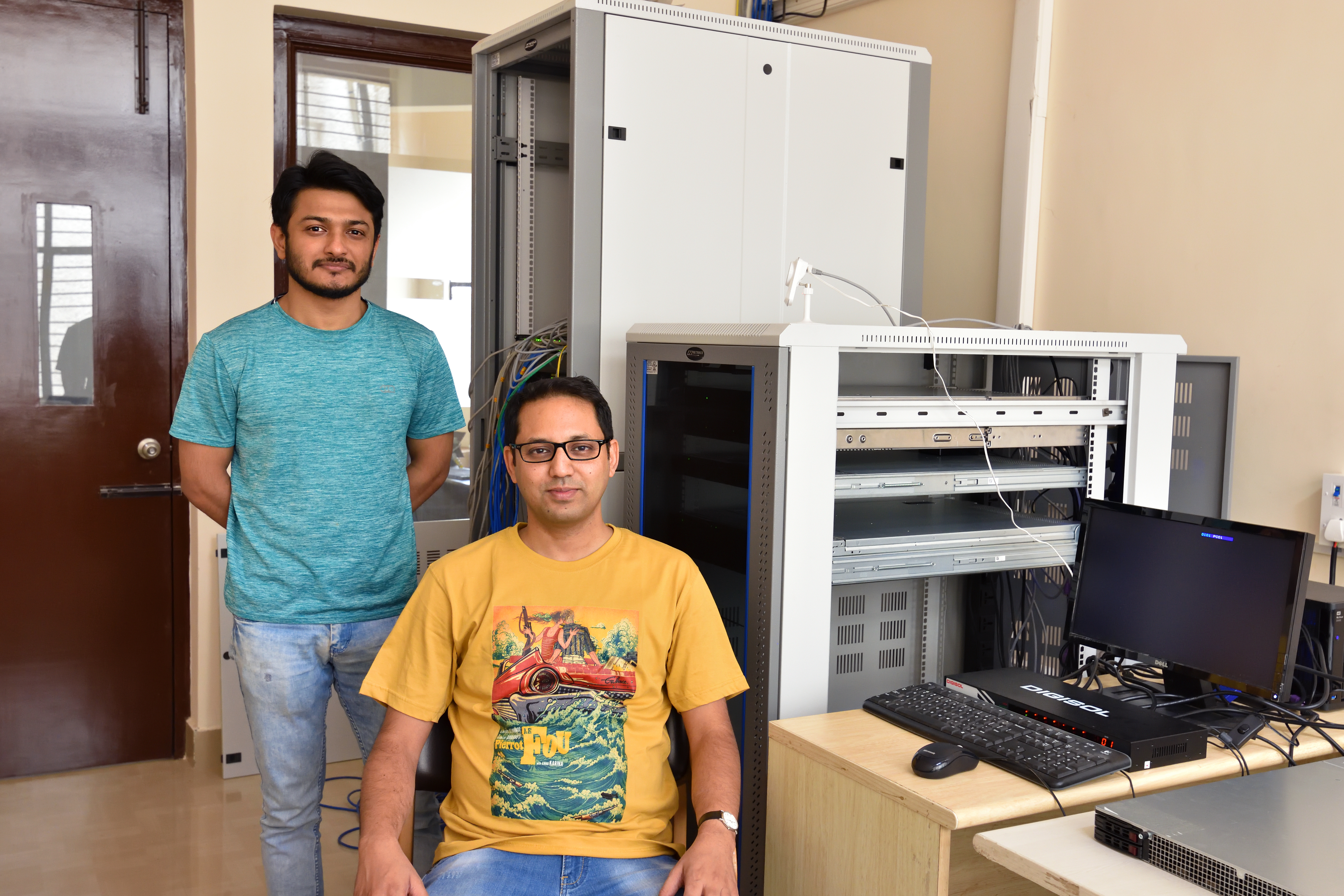Hardware Accelerated Atomic Structure Search for 2D Energy Storage
Two dimensional (2D) materials are being explored extensively for possible applications in next-generation lithium-ion battery anode due to their large surface-to-mass ratio. Rhenium dichalcogenide (ReS2), a recent addition to the 2D transitional metal dichalcogenides (TMDs), has arrested special attention due to its unique, naturally stable, distorted octahedral (T’) crystal structure, which has prompted strong anisotropic electronic and thermal transports. Recent experiment has demonstrated a reversible specific capacity of about 200 mAh/g and a corresponding open circuit voltage of around 0.9 V in vertical ReS2 nanowalls anode-based LIB, which are close to those of MoS2 anode-based LIBs. This is indeed surprising since the atomic mass of Re is almost double than that of Mo.

We investigate lithium ion binding on ReS2 by first-principles based calculations. The distorted T’ phase inherited by the ReS2 crystal makes the computational modeling very challenging compared to the previous works dealing with symmetric 2D materials. We employ hardware-accelerator assisted high-throughput calculations, using van-der-Waals density-functional-theory based ‘structure search’ technique, to emulate the lithiation process. Exploring 2000 structures, each containing 49 to 98 atoms, we find the most stable lithiated phases for certain lithium concentrations. We then design a delithiation algorithm, combining quick and gradual delithiation process, and apply it to those lithiated structures for the estimation of the reversible specific capacity. This rigorous method allows us to study the significance of metal-Sulphur bond breaking during lithiation and successive restoration during delithiation, which were observed in recent in-situ and ex-situ measurements. The lithium storage capacity of ReS2 is further compared with MoS2 using ‘crystal orbital hamilton population’ calculation. The unique atomistic modeling technique proposed in this work is generalized enough for the realistic estimation of reversible lithium ion storage capacity of any new material.


Links:
1.Arnab Kabiraj and Santanu Mahapatra, “High-throughput first-principles-calculations based estimation of lithium ion storage in monolayer rhenium disulfide” Communications Chemistry, Nature publishing group, 2018. DOI: 10.1038/s42004-018-0082-3
2.Behind the paper : https://chemistrycommunity.nature.com/channels/1465-behind-the-paper/posts/40889-hardware-accelerated-structure-search-for-2d-energy-storage
3.Group: http://nsdrl.dese.iisc.ac.in
4.YouTube Channel: nsdrlTube






